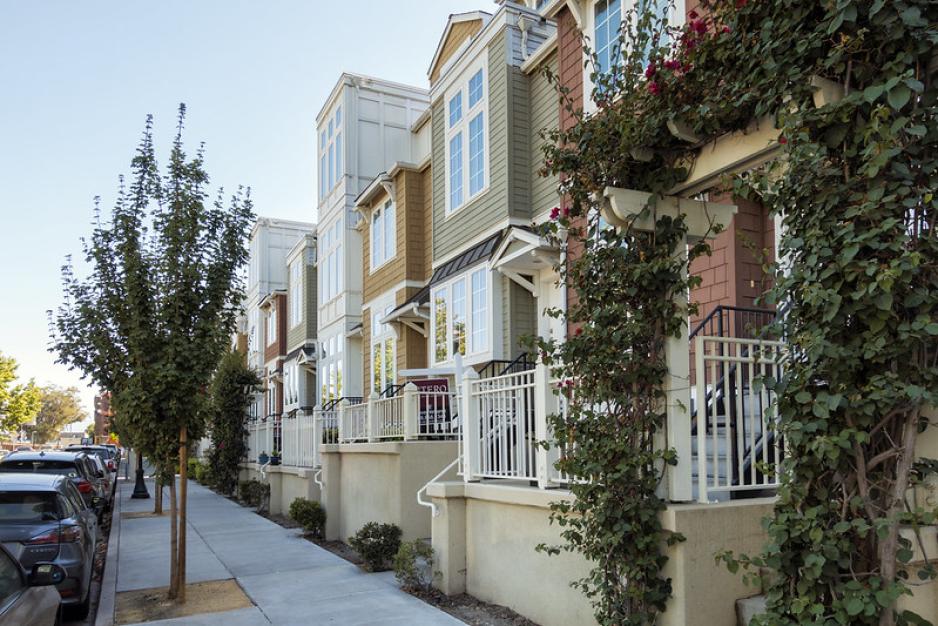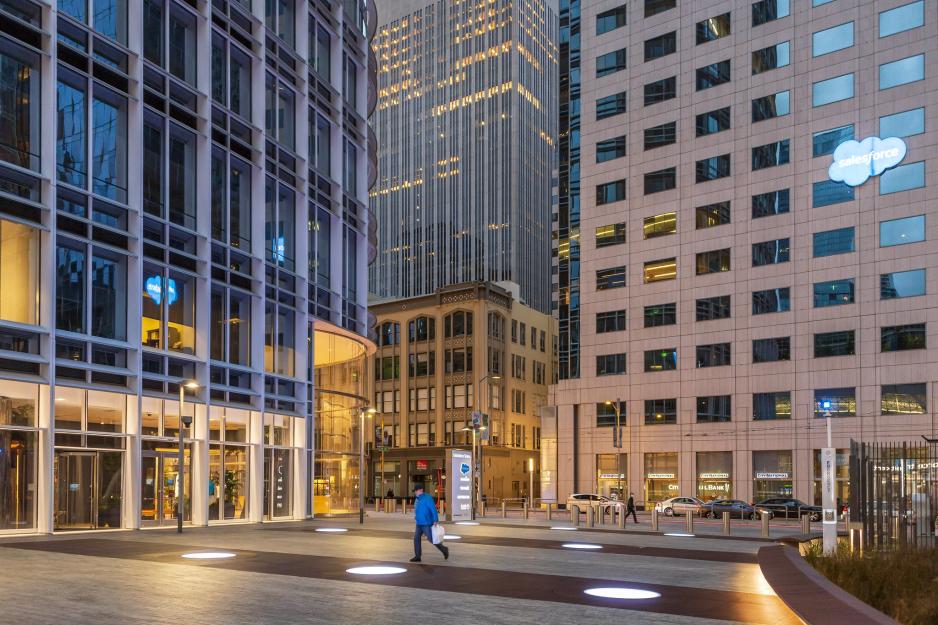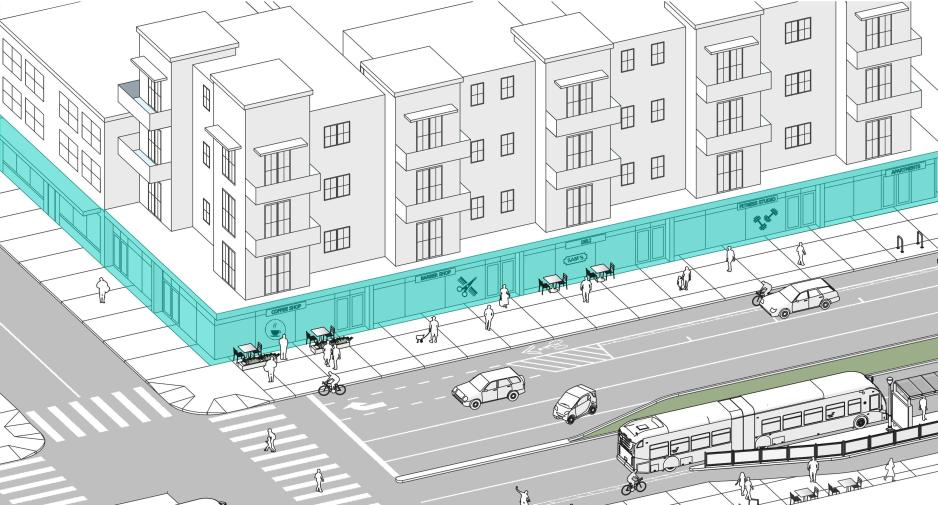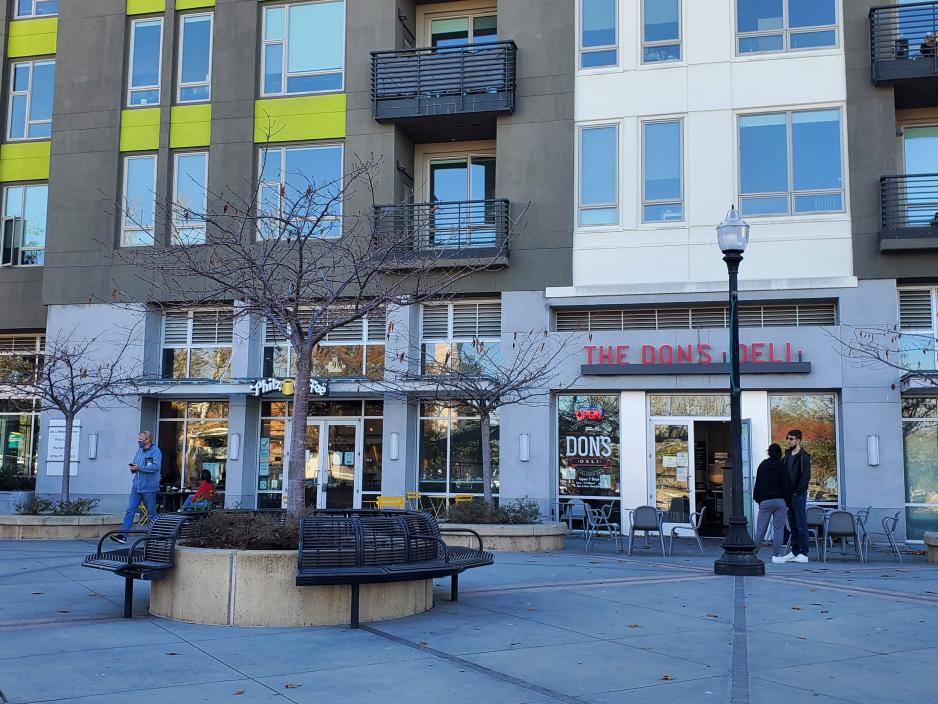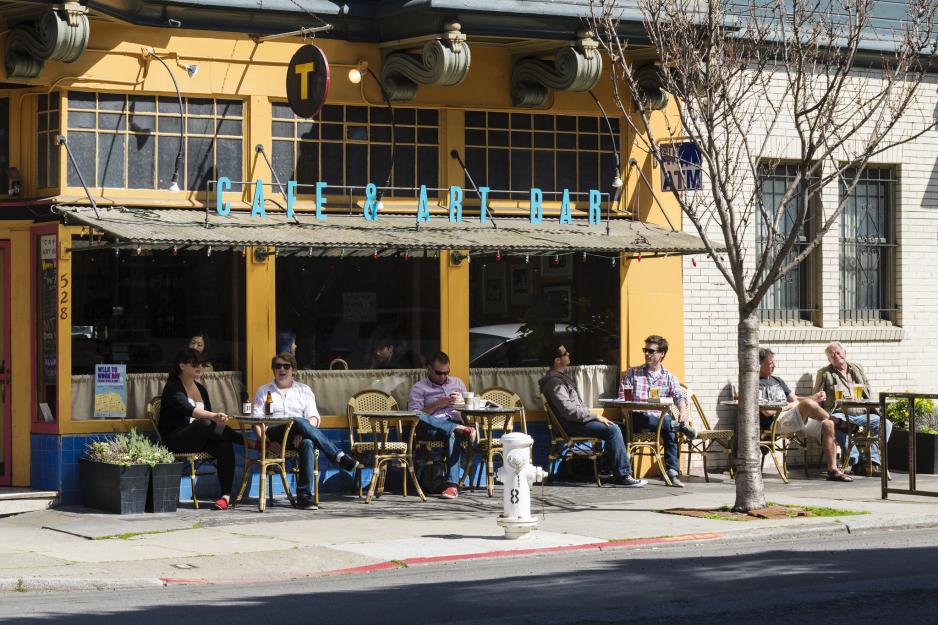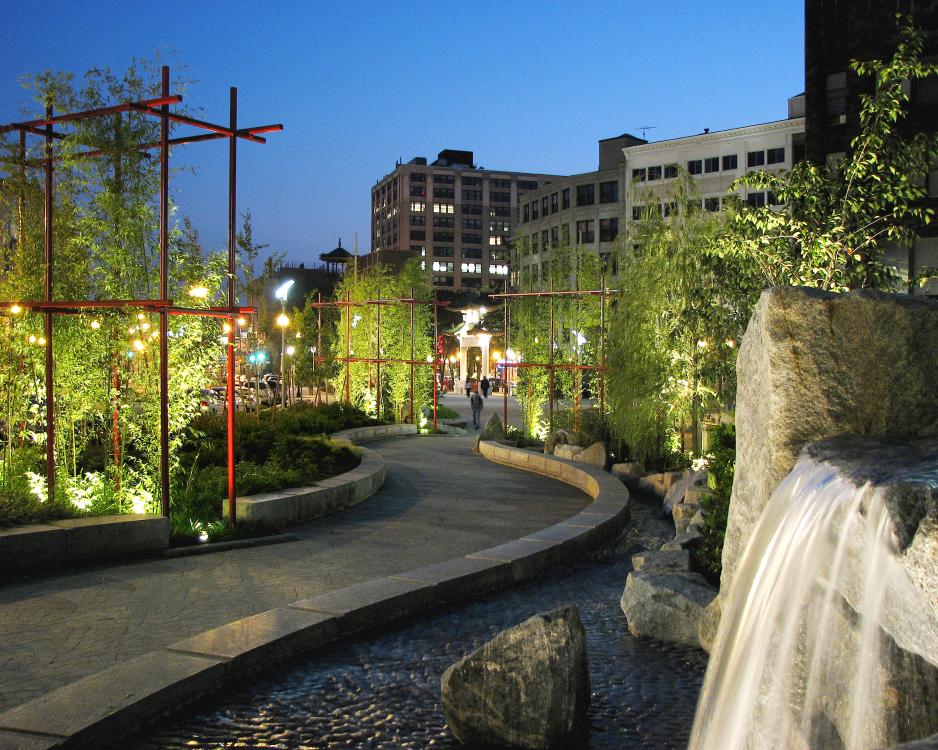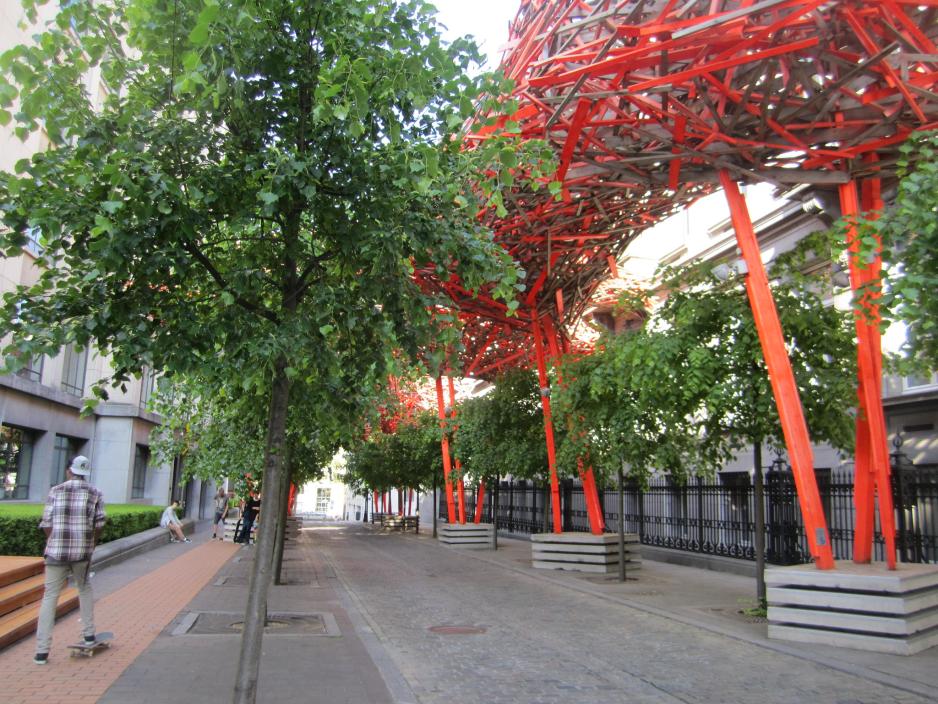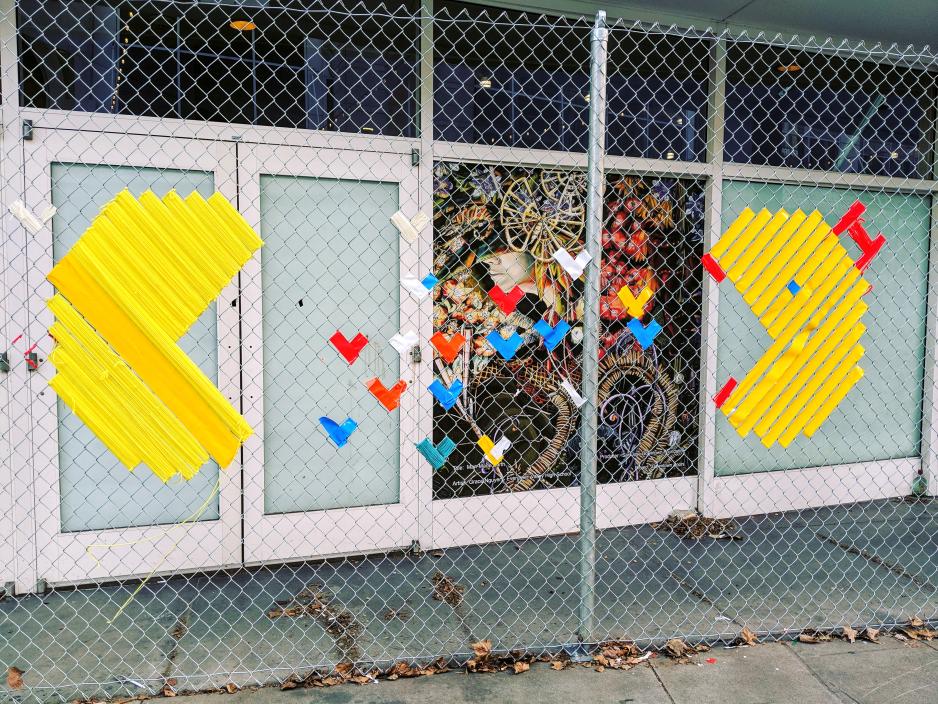Design the public and private realms to increase the sense of security near transit. Crime Prevention Through Environmental Design (CPTED) is a multi-disciplinary approach that focuses on design choices that can be implemented to deter crime and reduce victimization. The concept builds on four (4) main principles; Natural Surveillance, Territorial Reinforcement, Natural Access Control, and Maintenance. Dynamic placemaking approaches to CPTED are generally more successful than providing barriers, cameras or other static security measures.
Provide clear boundaries between public and private space. Ensure defensible design of public-private transition areas through grade separation and landscape treatments.
Natural surveillance is key to neighborhood safety. Neighborhoods with higher walkability indices and/or businesses open longer hours are associated with lower crime. Ensure open sightlines to and from public and private spaces.
Locate pedestrian-oriented uses on the ground level to support pedestrian activity and promote safety and visibility. Uses should include retail and food services, social and community services, office space, and living or activity spaces of residential buildings. A diverse selection of consistently occupied space is preferable to unoccupied space waiting for a specific type of tenant. Occupied storefronts, regardless of occupancy type, offer eyes on the street, which provides increased community safety.
Design public spaces, such as parklets or sidewalk cafes, that provide opportunities for social interaction between neighbors and neighboring communities. Neighborhoods that encourage social cohesion tend to problem solve and form official or unofficial neighborhood watch, promoting a sense of safety and security.
Ensure adequate human-scale lighting. Public space should be evenly illuminated to allow people to better observe their surroundings.
- Consult an electrical engineer to select the lighting with the best color rendering for CPTED.
- Ensure the tree canopy does not interfere with adequate lighting of pedestrian spaces.
- Light trail underpasses, day and night for added security.
Maintain public spaces to portray a sense of ownership and by extension a sense of safety. Well maintained spaces feel safer than unmaintained spaces.
- Maintain landscape to avoid ambush areas or hiding spots near trails and walkways. Maintain low plants at two-feet high and prune tree branches below six-feet high to maintain clear sightlines for pedestrians and cyclists.
Incorporate public art into underutilized spaces. It creates a perception of ownership and improves the perception of the space.
